In my previous blog update I wrote about the growing threat of the COVID-19 virus. I followed this with the contagion update in my Soapbox article which will appear in the next edition of Amiga Future magazine. Since writing both updates there has been an exponential growth in the spread of Covid-19, so much so that I’m writing this blog in week 3 of New Zealand’s total country wide four week lockdown. Although the number of Covid-19 cases is still quite low in New Zealand at 1440 (confirmed and probable cases) and twelve Covid-19 related deaths at the time of writing, the county has gone into total hibernation with all non-essential businesses, restaurants, schools and even takeaways closed down.

People are restricted to their homes and required to stay within their family bubble. All non-essential car and air travel is banned. AirNZ, the country’s award winning flagship airline has virtually shut down and our borders are closed to non-residents. The New Zealand lockdown is not unique of course and many countries have implemented similar isolation measures. Many other countries have shutdown all non-essential businesses which is having a massive detrimental effect on the economy. With many parts of the world also shut down because of the virus companies, both large and small, are facing a very uncertain future. If the pandemic is not brought under control you can expect to see a lot of companies, some household names disappearing from the scene.
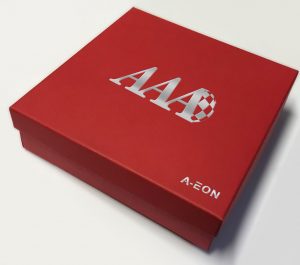
Our Amiga community is not immune from these dramatic world events. The lockdown will delay the release of the A1222 Early Adopter edition with Matthew Leaman stating on AmigaWorld.net it could be pushed back towards the end of the year. In better news, AmigaKit, as an online retailer, can still mail shipments to most parts of the world and Matthew has confirmed that the AAA Bundles will begin shipping in April/May. The AAA bundle was originally due to ship in February but the COVID-19 pandemic caused an unavoidable delay. However, Matthew has also confirmed that components of the AAA software bundle are being uploaded to Amisphere to allow registered AAA Bundle owners to start downloading titles. For news and updates on the A1222 Plus release please check the A1222 Plus Early Adopter website.
Amiga35 Celebrations on hold?
The year 2020 marks the 35th Anniversary of the Amiga’s birth and many Amiga groups around the world were planning celebrations to mark the event. Needless to say the Covid-19 pandemic has thrown all plans into total disarray. The three Amiga35 events I’m involved with as a sponsor have either been postponed or cancelled.  In the USA, Amiga35.us was scheduled for early June in Santa Clara, California the spiritual birthplace of the Amiga. Unlike some parts of the USA, California has imposed strict isolation measures to combat the spread of Covid-19. As of March 19th and until further, all Californian residents are required to stay home except to get food, care for a relative or friend, get necessary health care, or go to an essential job. The hotel selected for the event in Santa Clara cancelled the booking and decided to bring forward a planned refurbishment programme. There are signs that the situation in California is improving and the organising team, headed by Bill Borsari and Dale Luck, are now trying to decide whether to reschedule for later in the year or delay the event entirely until 2021.
In the USA, Amiga35.us was scheduled for early June in Santa Clara, California the spiritual birthplace of the Amiga. Unlike some parts of the USA, California has imposed strict isolation measures to combat the spread of Covid-19. As of March 19th and until further, all Californian residents are required to stay home except to get food, care for a relative or friend, get necessary health care, or go to an essential job. The hotel selected for the event in Santa Clara cancelled the booking and decided to bring forward a planned refurbishment programme. There are signs that the situation in California is improving and the organising team, headed by Bill Borsari and Dale Luck, are now trying to decide whether to reschedule for later in the year or delay the event entirely until 2021.  Likewise, in the Netherlands, Rene’ van der Steen, Marvin Droogsma and Marcel Franquinet, the organisers of Flashback 20/20, an ambitious retro-computing party featuring an Amiga35 celebration, have postponed their event due to stricter measures imposed by the Dutch government on March 23rd. They have rescheduled Flashback 20/20 for September 12 and 13 and are currently taking bookings for the show in the hope that Covid-19 restrictions will have eased by then.
Likewise, in the Netherlands, Rene’ van der Steen, Marvin Droogsma and Marcel Franquinet, the organisers of Flashback 20/20, an ambitious retro-computing party featuring an Amiga35 celebration, have postponed their event due to stricter measures imposed by the Dutch government on March 23rd. They have rescheduled Flashback 20/20 for September 12 and 13 and are currently taking bookings for the show in the hope that Covid-19 restrictions will have eased by then.
 Meanwhile, the Amiga35 UK event, originally scheduled for October this year has now been cancelled altogether. The organisers, Johnathan Taylor, Paul Bridger, Katrina Taylor, Andy C. Spencer and Paul Hesford made the difficult decision to cancel the show after months of planning. Paul wrote, “Hi Trevor, it comes with a heavy heart and due to unforeseen circumstances and current climate out of our control we have decided to cancel Amiga 35 UK due to the coronavirus uncertainty and to avoid any disruption to the event, the venue and most importantly people’s health especially those travelling.” Their event included a charitable connection whereby part of the ticket sales and the proceeds from a special raffle/auction were to be donated to the Retro Computer Museum in Leicester. Although the show has been cancelled this year the organisers have put out a request for donations to the museum which is under threat of closure due to the Covid-19 lockdown. The organisers now plan to hold Amiga 35 UK some time in 2021.
Meanwhile, the Amiga35 UK event, originally scheduled for October this year has now been cancelled altogether. The organisers, Johnathan Taylor, Paul Bridger, Katrina Taylor, Andy C. Spencer and Paul Hesford made the difficult decision to cancel the show after months of planning. Paul wrote, “Hi Trevor, it comes with a heavy heart and due to unforeseen circumstances and current climate out of our control we have decided to cancel Amiga 35 UK due to the coronavirus uncertainty and to avoid any disruption to the event, the venue and most importantly people’s health especially those travelling.” Their event included a charitable connection whereby part of the ticket sales and the proceeds from a special raffle/auction were to be donated to the Retro Computer Museum in Leicester. Although the show has been cancelled this year the organisers have put out a request for donations to the museum which is under threat of closure due to the Covid-19 lockdown. The organisers now plan to hold Amiga 35 UK some time in 2021.
With so many international borders now closed to non-residents, and international air travel decimated with at least half the world planes presently grounded, I think it will be increasingly difficult, if not impossible, for travel between certain countries. I hope these restrictions will be eased soon but I fear the various lockdowns and border controls will continue for much of this year. There is some hope. In China, where the Covid-19 outbreak is now abating, the amount of flights taking off has begun to increase. Hopefully we will see similar improvements in the rest of the world as the fallout from the pandemic wanes. Fingers crossed.
Does A1222 into A1500 go!
So what does an Amigan do when stuck inside during a pandemic lockdown? I was a backer of Steve Jones’ Checkmate A1500 Kickstarter campaign and I received my case towards the end of last year. When Steve was planning the A1500 project I supplied him with the Tabor dimensions so he could ensure his case would support the motherboard.
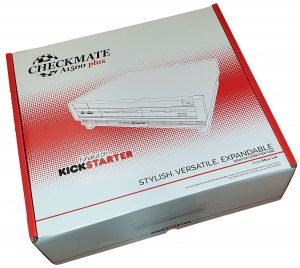
Needless to say when my A1500 case arrived I eagerly unpacked the box only to discover that, although I could install the Tabor motherboard in the case, I needed an PCI-e extender cable for my Radeon RX560 gfx card which needed to be installed horizontally. I could not even install the gfx card vertically as a temporary fix since the case backplate prevents the card from being installed in the PCIe slot. Anyway, I ordered the extender cable online and waited for it to arrive. That was several months ago.
As the Covid-19 pandemic began to spread worldwide, I forgot all about the extender cable but, just before the New Zealand lockdown the cable finally arrived. So last week I removed the Tabor motherboard from the Fractal mini-tower case I originally used and set about installing it in my A1500 case. As you might expect, since Steve allowed for the Tabor board in his case design, the motherboard was a perfect fit.

When I attended Amiga34 in Neuss last year, Dennis Zweedijk assited me with the A-EON Technology display along with Christian Zigotzky and his partner Nadine. Dennis is a long-time AmigaOS 4 beta tester and has helped beta test AmigaOS 4 on all of A-EON’s AmigaOne machines to date: X1000, X5000/20, X5000/40 and A1222. Dennis created a 3D printed backplate for his A1222 beta system and brought a few extra backplates to the show to give away. I’m pleased to report that Dennis’ 3D printing skills did not go to waste and the backplate was a good fit with the Tabor board and A1500 case. I installed my Radeon RX560 Polaris card horizontally and inserted the PCIe extender cable into the PCIe slot and connected the other end to the gfx card. The gfx card is two-slots wide and quite heavy. Although it installed horizontally without any problem, the whole of the weight of the card is being support by the gfx card backplate alone, since it is not supported by the PCIe slot. It not a problem for the moment but in the longer term I may have to install a prop to hold up the other end and take some stress off the card. Brings back memories of towering my A4000 motherboard all those years ago. 😉
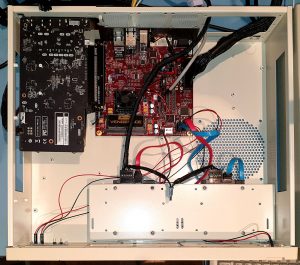
A bigger issue is that the Rx560 gfx card requires additional power through a 6-pin PCIe connector. The connector is on the side of the card facing the left-side of the case and protrudes out the side of the case. With the connector in place it is impossible to install the case lid. I could replace the Rx560 card with a less powerful model that does not require an additional PSU connection and there are plenty of single slot Radeon cards available which do not require any additional power.
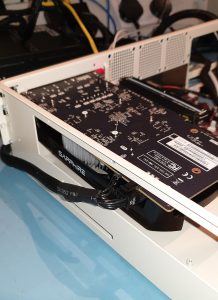
However, I would prefer to keep my Rx560 card which plays 4k videos very nicely with A-EON’s new video drivers. Searching online, I’ve tracked down some right-angle 6-pin PCIe mod connectors which just might do the trick? There might be enough space at the side of the case for the right-angle connector to attach to the gfx card and still allow me to install the case lid. It will be a tight squeeze but I’m hoping this will work. In the meantime I have no option but to leave the lid off the case.
I connected the Power and HDD LED cables and the Power On/Off lead to the motherboard along with a reset switch cable. I drilled a small hole in the A1222 backplate and installed the reset switch there. Out of the way but still easily accessible. The Tabor board has two additional onboard USB headers. Ideally I would like to bring them to the front of the case but that will require cutting holes in the plastic facia and finding a way to fix them in place. For the moment, I’ve connected a short USB cable to one of the onboard headers and run the USB cable out of the back of the case. I will need to replace this with a dual USB cable and socket solution in the future. Probably by cutting a hole for the USB connectors on the case’s metal backplate. Finally, I connected the monitor to the HDMI connector on the gfx card. With everything connected, and the case lid off, now was the time for the acid test. I switched on the power to the external PSU, powered up the monitor and then pressed the power button on the front A1500 case.
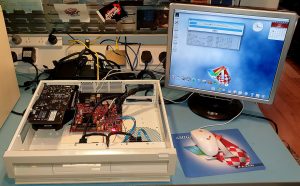
The green Power and yellow HDD LEDs both lit up. After a short while the yellow LED turned off. After the kickstart files loaded the yellow HDD LED began flashing as the HDD was being accessed. It gave me a nostalgic feeling to see the traditional Amiga LEDs in operation once again. I’d read conflicting reports which suggested that not all PCIe extender cables work but I’m pleased to say that I had no problems and the Tabor board booted into the AmigaOS 4 Workbench at first time of asking.
So what’s my opinion of the A1500 case? It’s faithfully modelled after the elegant A3000 case design, although it’s 6 cm wider and the height is approximately 0.5 cm less. It is very sturdily built and has the same depth as the A3000 case so there is plenty of room for the Tabor motherboard. In fact so much room it is almost too big. Even with a suitable internal PSU the mini-ITX Tabor motherboard hardly takes up much space. Of course the A1500 case was designed to take a variety of motherboards, many of which are much larger than the Tabor board. The issue with the gfx card PSU connector means I cannot install the case lid at the moment. I’ve ordered a slim line 300W internal power supply and I will try to track down a suitable right-angle PCIe power connector. At the moment though, it’s not really an issue as I’m frequently testing different gfx cards and continually removing the lid, which takes a bit of practice, would be a nuisance. However, I do want to install the lid because I want to place the monitor on top of the case, just like in the good old days! 😉 So does the A1222 into A1500 go? The answer is yes and with a whole lot left over.
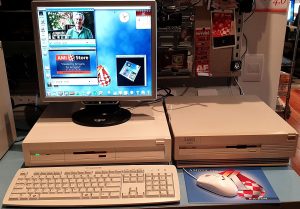
Update: the internal 300w PSU arrived just as I was about to post this blog so I quickly replaced the external PSU and installed the internal PSU in the A1500 case. The cable and PCIe PSU connector on the internal PSU are smaller than the connector on my external PSU and with a little bit of fettling (don’t ask) I was able to connect the additional power cable and attach the case lid. I will need to create a special backplate to secure the internal PSU but for the moment it is OK. I placed the monitor on top of the A1500 case and, for comparison, put an A3000 desktop alongside it. The footprint of the A1500 is a little too big for my liking but the fact I can place the monitor on top of the case is a big bonus. I have to admit the A1222 in the A1500 case together with the original A3000 make a very nice pair. I created a short video of the A1222 playing a couple of HD videos simultaneously using a beta version of eMotion from EntwicklerX.
We are in the fourth week of lockdown in New Zealand and the signs are the government might reduce the status to Alert level 3 this week. It won’t make a lot of difference and I will still be mostly stuck at home. Maybe it’s time to finally rebuild by A4000 Ateo tower system? 😉
Spring is in the air
If you follow the Remotely Interested podcasts you will know that Dr. Adam Spring, PhD is a closet Amigan, not that he really hides that affliction. 😉

In addition to his podcast work he is a regular contributor to IEEE Spectrum with articles covering Amiga 30 and the late Dave Needle. A self confessed technogeek, last year he was awarded his doctorate by Manchester Metropolitan University for his research into 3D documentation and digital heritage and recently he was elevated to IEEE Senior member status for his significant contributions to the profession. One of the people who nominated him for IEEE Senior member status was none other than Joe Decuir, who is an American fellow of the Institute of Electrical and Electronics Engineers and, of course, one of the original Amiga founding developers.
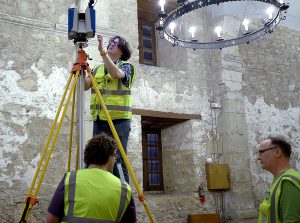
It will come as no surprise to learn Adam is an expert in applying 3D imaging solution for digitising cultural heritage sites. Last year he worked on a project with ‘Laser’ Larry Kleinkemper of Lanmar Services to help digitise, via laser scanning, The Alamo Mission in Santo Antonio, Texas.
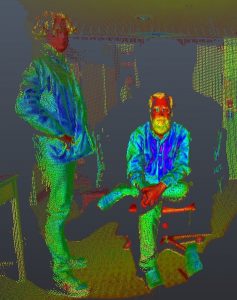
Adam’s friend Tim Jenison, yes that Tim Jenison the co-founder of NewTek, offered to come along and film them laser scanning The Alamo. Subject to receiving permission, Adam hopes to be able to release the short film and scan data in the near future. Adam even manged to laser scan Tim during the filming!
Anyway, congratulations on your IEEE recognition Dr Spring, you clever b****r! 😉
Lockdown viewing
If you are stuck inside during Covid-19 lockdown, apart from rebuilding that old Classic 68k Amiga you could always watch one of the excellent Commodore or Amiga documentaries that are available on the web. Two immediately come to mind. The first dates back to 2010. That year was the 25th Anniversary of the Amiga’s birth. I attended AmiWest 2010 to present the first public display of the AmigaOne X1000 in North America running a beta version of AmigaOS 4.1. I was joined by AmigaOS 4 contract developers, Thomas and Hans-Joerg Frieden and even Ben Hermans made a brief cameo appearance on behalf of Hyperion Entertainment. It’s hard to believe that the past ten years have flown by so quickly. At the show I was interviewed by Zach Weddington for the Viva Amiga documentary film. 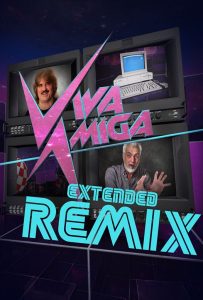 It would take another seven years before the film was officially released which by that time it would also contain footage of the Amiga30th Anniversary event at the Computer History Museum in Mountain View, California in 2015. An early version of the movie was premiered at the Amiga30th’s Saturday night banquet and, as I wrote at the time, I sat at a table with many of the original Hi-Toro/Amiga founders and staff and there was barely a dry eye at the table as the movie played. One criticism frequently levelled at the film, apart from the length of time it took to release the final version, was that, at just over an hour playing time, it was too short. Well that is all about to change. With my support, Zach has been working on an extended version of the film entitled, funnily enough, Viva Amiga Extended Remix. I recently received my review copy of the updated documentary which is now over 2 hours and 20 mins long. The new version includes a lot more interviews and stories from key Amiga developers and other Amiga luminaries and enthusiasts. Apart from being longer it has a more upbeat feel compared to the original. It was my plan to offer the movie for screening at the various Amiga 35th events this year and hopefully this can still be achieved assuming the shows are able to go ahead. If not, there is always next year.
It would take another seven years before the film was officially released which by that time it would also contain footage of the Amiga30th Anniversary event at the Computer History Museum in Mountain View, California in 2015. An early version of the movie was premiered at the Amiga30th’s Saturday night banquet and, as I wrote at the time, I sat at a table with many of the original Hi-Toro/Amiga founders and staff and there was barely a dry eye at the table as the movie played. One criticism frequently levelled at the film, apart from the length of time it took to release the final version, was that, at just over an hour playing time, it was too short. Well that is all about to change. With my support, Zach has been working on an extended version of the film entitled, funnily enough, Viva Amiga Extended Remix. I recently received my review copy of the updated documentary which is now over 2 hours and 20 mins long. The new version includes a lot more interviews and stories from key Amiga developers and other Amiga luminaries and enthusiasts. Apart from being longer it has a more upbeat feel compared to the original. It was my plan to offer the movie for screening at the various Amiga 35th events this year and hopefully this can still be achieved assuming the shows are able to go ahead. If not, there is always next year.
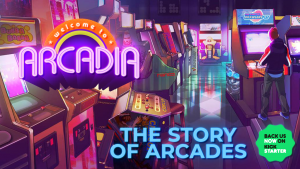
Meanwhile Zach has been working on another movie project in collaboration with Amiga Bill and a host or other notable Amigans. Arcadia, will travel through time to discover the secret history of arcade games. The people, the places, and the stories behind a century of gaming. As with Viva Amiga, the documentary will be funded through a Kickstarter campaign which should be launched in the near future. Click here for more details.

The second documentary I can recommend is the The Commodore Story, released in 2018 by Steven Fletcher who directed and produced the film. The movie covers Commodore’s 8-bit and Amiga machines with a heavy focus on the Jack Tramiel years. It is certainly worth watching if you want to find out more about the man and his often quoted philosophy that “business is war”. Steven has another Kickstarter campaign running at the moment for a new documentary: Amiga 2020. Unlike the Commodore Story, his new film covers the post Commodore years and all the wild, wacky and wonderful Amiga developments and the Amigans who work hard to keep the Amiga spirit alive in 2020, 25 years after the demise of Commodore. The Kickstarter campaign has easily exceeded its minimum target of £12.5K with almost £30K already raised from 748 backers.  Although all of the stretch goals have also been achieved you can still back Steven’s Kickstarter campaign which (at the time of writing) has another 8 days to run. Personally, I really like the look of the Amiga 2020 baseball caps myself! 🙂
Although all of the stretch goals have also been achieved you can still back Steven’s Kickstarter campaign which (at the time of writing) has another 8 days to run. Personally, I really like the look of the Amiga 2020 baseball caps myself! 🙂
There are plenty of other excellent Commodore and Amiga documentaries available online if you find yourself with time on your hands during the lockdown. And if you are really bored you could always watch an Atari or Apple documentary. Yeah nah, as we say in New Zealand. 😉
ExecSG update from kernel Solie
 Despite the Covid-19 pandemic the ExecSG Team has been quite busy over the past few months. I asked ExecSG Team lead, Steven Solie for a brief update and this is what he sent me, “The very first set of rebuilt kernels were produced in late August 2019. It took some time to get everything up and running smoothly so we didn’t start adding new features until around November. Features like accelerated SPE copy routines for the A1222 and a brand new DMA engine API for the X5000 and A1222. There have also been many general bug fixes as we get ready for the release of the next update of AmigaOS 4.1 by Hyperion Entertainment. Of course, multi-core support continues to be a top priority and we’ve made significant strides with the first implementation targeted for the X5000 with the X1000 and A1222 to follow. The team has now grown to 15 members, including Trevor. I recently completed streamlining the build process for all supported AmigaOne platforms.” Thanks for the update Steven, now get back to work! (Just kidding ;-))
Despite the Covid-19 pandemic the ExecSG Team has been quite busy over the past few months. I asked ExecSG Team lead, Steven Solie for a brief update and this is what he sent me, “The very first set of rebuilt kernels were produced in late August 2019. It took some time to get everything up and running smoothly so we didn’t start adding new features until around November. Features like accelerated SPE copy routines for the A1222 and a brand new DMA engine API for the X5000 and A1222. There have also been many general bug fixes as we get ready for the release of the next update of AmigaOS 4.1 by Hyperion Entertainment. Of course, multi-core support continues to be a top priority and we’ve made significant strides with the first implementation targeted for the X5000 with the X1000 and A1222 to follow. The team has now grown to 15 members, including Trevor. I recently completed streamlining the build process for all supported AmigaOne platforms.” Thanks for the update Steven, now get back to work! (Just kidding ;-))
Linux corner
While most of A-EON’s development effort goes into supporting Classic and next-generation Amiga hardware and software it good to know our dedicated team of core Linux enthusiasts work hard to ensure that our AmigaOne machines continue to support modern PowerPC Linux distributions.

Although many people contribute to our Linux cause, I want to single out Christian Zigotzky who continues to ensure that A-EON’s hardware is supported by the mainstream Linux kernel. He provides Linux support for all of A-EON Technology’s AmigaOne PowerPC hardware. This includes the AmigaOne X1000, X5000 and A1222. He is also an active member of the AmigaOS 4.1 beta test team and together with his wife Nadine has assisted me at every Amiga Germany show in Neuss. He is also very generous with his time, providing Linux support to other users including writing installation instructions and helping with installation problems.

Christian also works closely with Casey Cullen who is the founder and maintainer of the Fienix project, a PowerPC Linux distro specifically designed for modern-day PowerPC machines. Christian provides Casey with kernels for his X5000/20 kernels and assists with debugging and help building several programs. Christian has posted screengrabs of Fienix running on his X1000 and X5000/40 and just to prove a point Casey has recently posted a video of his X5000/20 running Fienix steaming an HD video in youtube.
One good thing about Fienix is that Casey has pre-configured the distro to work out of the box with modern PowerPC hardware. As Casey, says in his video, “One thing I see online, quite a lot is that PPC can’t stream HD YouTube videos”, “Most definitely, if you have an AmigaOne system there’s absolutely no reason why you cant stream an HD video from YouTube”.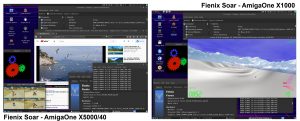 Not only does Fienix allow you to play YouTube HD videos but it also allows video editing. In fact Casey has pre-configured Fienix to be a fully featured distro without the need to search for all those missing components to make it usable.
Not only does Fienix allow you to play YouTube HD videos but it also allows video editing. In fact Casey has pre-configured Fienix to be a fully featured distro without the need to search for all those missing components to make it usable.
If you want to read more about Casey and his PowerPC Fienix distro check out this interview.
Some Boing cheer

With all the negative news surrounding Covid-19 it’s good to finish this update with a little Boing cheer. I think most people who follow my blog will know I’m always on the lookout for Amiga “signs” in everyday objects. Some might even say I was little obsessed! To feed my addiction people regularly send me their own Boing inspired photos so I thought I would post a few of the recent ones I recently received or spotted myself.
Until next time, stay safe…